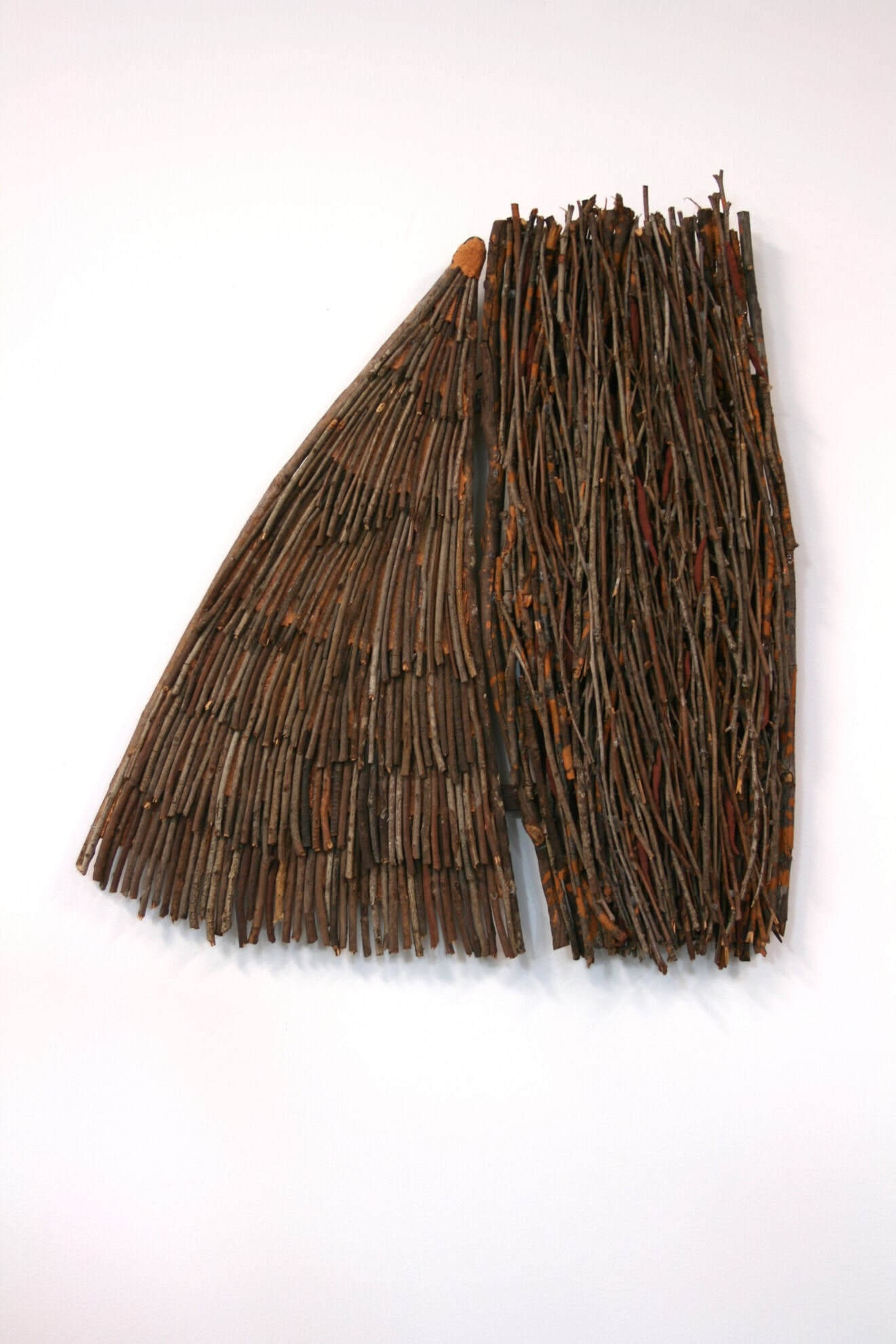Merv Muhling - Collected Works 1929 - 2003
$ 60.00
PATTERNS IN NATURE AND SELF
Two beautifully crafted artworks in the QUT Art Collection have intrigued me for over a decade now. I first came across them in 2010 and they could have been easily overlooked if time wasn’t taken to understand their form and construction. Composed from delicate eucalyptus twigs and wattle, it wasn’t until I held the sculptures in my hands-felt them tactilely-that I began to fully recognise their significance. There was a clarity in their seemingly ordinary nature and materiality; they straddled life as both artworks and organic forms. Their ambiguity called for me to stop, to immerse myself in the feelings and sensations that come to the surface by simply looking and touching them.
These two artworks were constructed from a labour-intensive technique using papier maché as an adhesive to bind the wooden sticks in place. Every tiny ball of maché and twig was painstakingly cut and sculpted, and each layer built upon the previous one, resulting in a perfectly balanced and ordered composition. The materials took on a new form while speaking to their past, the wood displaying clear signs of their previous life—knotted and scarred. The role of the papier-mâché, tightly rolled and formed into cocoon-like shapes, was both aesthetic and functional. Every action of the artist was clearly considered and precise, crafted by someone marked with an innate power to transform these seemingly humble materials into a new life. I would later learn the artworks’ titles, Untitled (About Moths) (1991), and that their maker was Merv Muhling. They bear an uncanniness, as they are both ‘of’ and ‘in’ the landscape—made from the detritus of the natural world to replicate another form found in nature. In these two artworks, Muhling pays homage to this beguiling species of lepidoptera. As a symbol of transformation, regeneration and the cycles of life, moths can camouflage in their ordinariness or parade in their beauty, captivating us with their dazzling patterns and shapes.
My initial visceral response to these artworks evoked memories of my childhood and the Mallee country of central Victoria—a landscape of low-lying bush and scraggy eucalyptus that would blossom into resplendent yellow wattles (acacia) in spring. It is recognised that our early experiences of the landscape form a crucial sense of who we are as we go into the world, and in surveying Muhling’s extensive practice laid out in this publication, it is clear he was greatly influenced by the natural world of his childhood. Nature and the recognition of the natural order of things clearly motivated his artistic enquiry; and as we survey between the material and methods, found objects and precious metals he used, it becomes apparent that he possessed alchemist qualities.
Merv Muhling: Collected Works 1929–2003 represents many things: an artist’s life, a teacher’s legacy, a daughter’s devotion, an object of beauty. The book is published twenty years on from Merv’s death in 2003, with daughter Cathy Muhling and wife Val Muhling (2023) the driving forces behind its inception. One of the unique aspects of being an artist and sustaining a creative practice is that through your work, a legacy remains for present and future generations. Recognising this, Merv once said “people will assess me through the objects that I make and leave behind”. This book is testament to this, but equally to acknowledging that an understanding of the character of the artist is as essential to seeing the artwork itself. ▪


